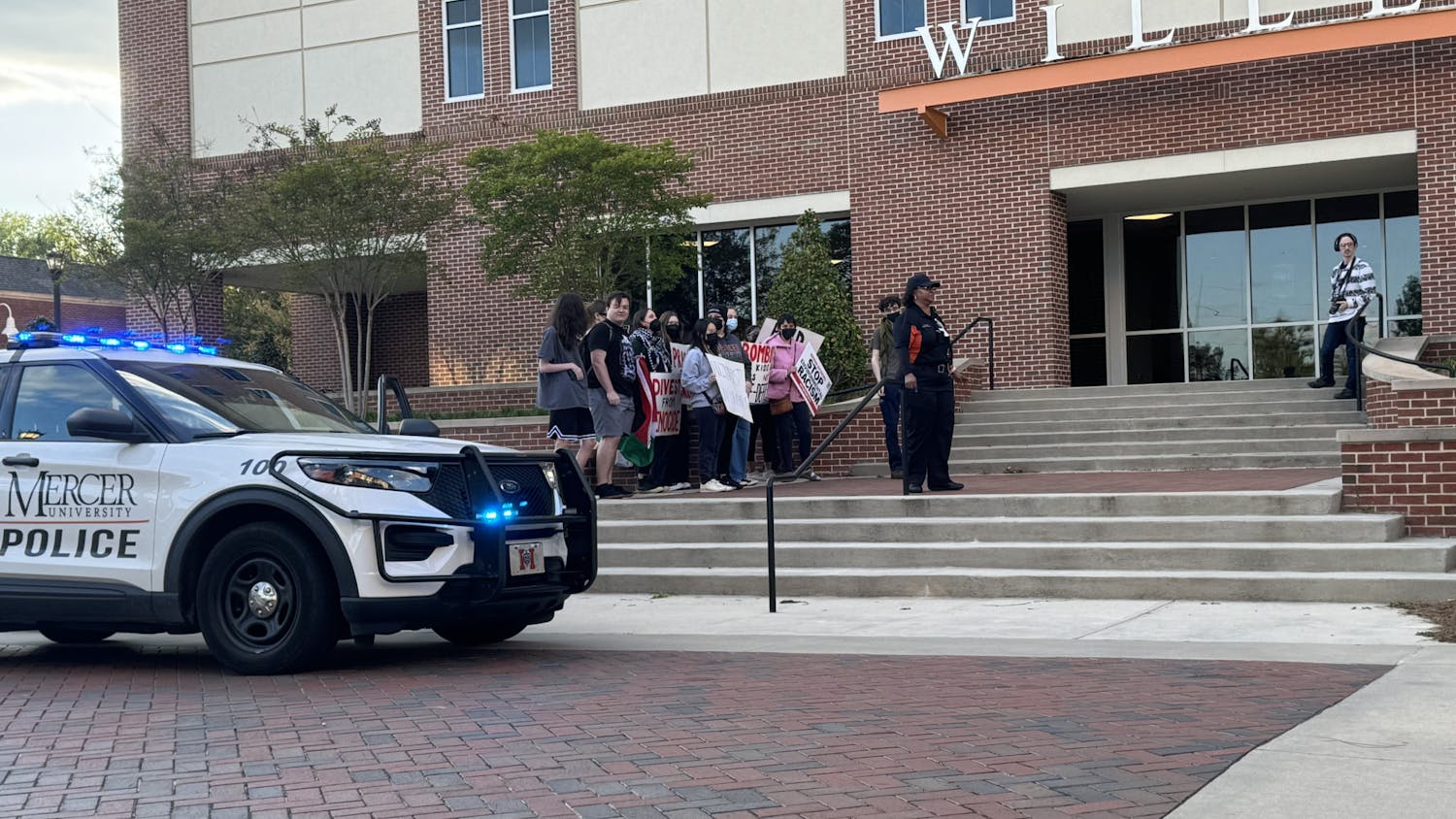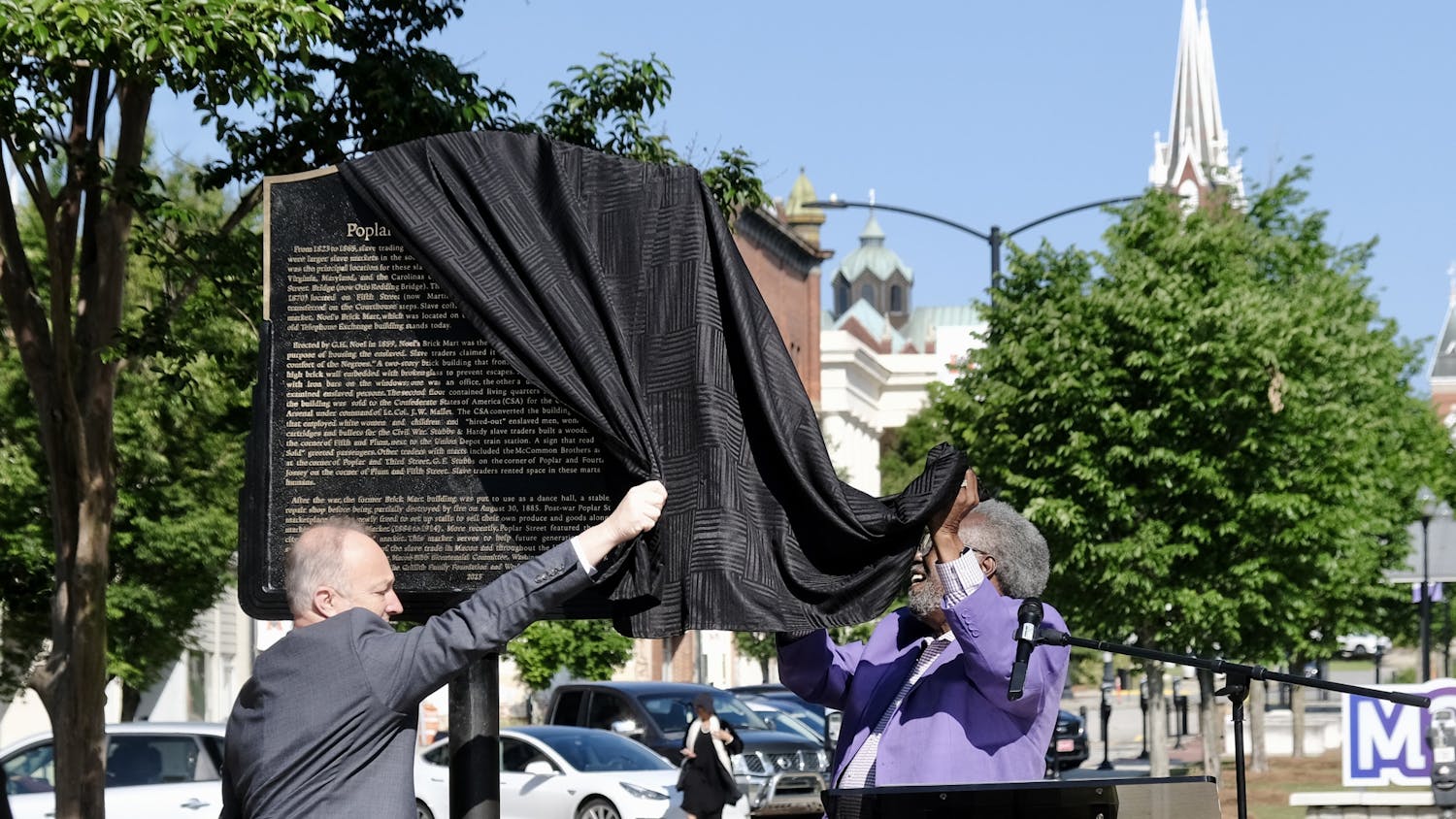This past Friday, the Grand Opera House in downtown Macon played host to “Combustible/Burn,” a play documenting the story of desegregation at Mercer University. Originally written by Page Morton Hunter professor of English Dr. Andrew Silver in 2002, the play was brought back as part of the yearlong celebration of integration at Mercer.
“Combustible/Burn” tells the stories of the people who brought desegregation to Mercer, spanning from 1948 to the late 60s. The play’s dialogue comes almost entirely from firsthand accounts of actual Mercer students and Macon community members present during the years of desegregation at Mercer. In its entirety the play has three different yet related storylines, each of which has its own set of characters.
The first arc of the play tells the story of the Bryanites, a group of radical and progressive white Baptist students who were children of the Great Depression and attended Mercer from 1948-1956 who were inspired by Mercer professor G McLeod “Mac” Bryan to fight against segregation laws in support of equal civil rights for African Americans in their community. Their pro-desegregation newsletter “Combustible/Burn” is the inspiration for the play’s title and was so named because readers were told to burn it after reading, lest they be caught with such radical materials.
The plays second and third arcs tell the story of Sam Oni, Mercer’s first black student, as well as the first generation of African-American students at Mercer, and spans from the early to late 1960s. For Oni, who recently spoke at the Beloved Community Symposium last month, coming to America was a shock. He left his country of Ghana, where a vast independence movement was sweeping across the African continent, confident with the idea that he would come to America and show segregationists that what they believed in was wrong. Unfortunately, the opposition he met was too strong; “It was a terrible experience for him,” Silver said.
To gather source material for the play, Silver conducted hundreds of hours of interviews with over 125 students, professors and community members, listening to their tales of struggle, hardship and eventual success and compiled them into three cohesive interlacing stories. “The technique I used is called documentary theater,” said Silver. “The idea of it is to allow a community to listen to each other, to try and animate voices in interviews and put them together to form something that is like a living story.”
Silver said he was inspired by music as a way to make his story come alive on stage. The dialogue in the play is written in such a way as to flow like music, with certain rhythms and cadences so as to provide a sort of imagery and engage the audience. “If you hear people speaking in waves…if there’s a rhythm to the way that you’re weaving peoples’ voices together, I think the play becomes more akin to music than your normal plot-driven play.
But the true message of the play is not just to teach audience members about the history of Mercer’s efforts of desegregation. The same Bryanites who attended Mercer from 1948 to 1956 later came back as professors and faculty members to really bring change and desegregation to Mercer. Thanks to Mercer professors like Mac Bryan, they had been set with a fiery passion, a burning desire to end segregation and inequality. For Silver, “Combustible/Burn” serves the one purpose of telling the story of the brave men and women who stood up for what they believed in, but it also serves another. According to Silver, the moment when Mercer began to embrace desegregation and equality was really the moment when the school came into its own as a place of acceptance for all. “To me,” he said “the play serves as a reminder of the work we have to do yet…it is a call to action, to resist the status quo, to resist mindless materialism, to embrace justice, to fight injustice wherever you see it…and to serve others, even if it puts you at risk.” It’s tough, Silver admitted, but he believes that’s what being a Mercer Bear is all about.




